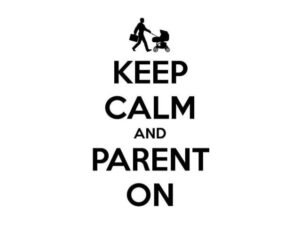How to validate your child’s feelings AND set limits for behavior at the same time!
Ever wonder how to validate your child’s feelings AND set limits for behavior at the same time? Now you can, by following three simple steps.
“Where there are no limits, there is no security.” – a “rule of thumb” from Garry Landreth’s family intervention, Child Parent Relationship Therapy (CPRT)
 Do you know those parents who are solid limit setters? The parents who confidently respond to their child screaming in the check-out line with an appropriate, not-too-harsh-but-definitely-not-giving-in, consequence? The ones that don’t enter fight or flight, resist the temptation to debate at the dinner table; the parents that can simply follow through on a limit and not.give.the.kid.dessert?!!
Do you know those parents who are solid limit setters? The parents who confidently respond to their child screaming in the check-out line with an appropriate, not-too-harsh-but-definitely-not-giving-in, consequence? The ones that don’t enter fight or flight, resist the temptation to debate at the dinner table; the parents that can simply follow through on a limit and not.give.the.kid.dessert?!!
There are those parents, and then there are other parents:
The Negotiators: “Eat 3 broccoli trees and 2 carrots sticks and then you can have dessert. No, French fries don’t count. Fine, eat one fry and we’ll call it even.”
The Pleaders: “Please! Just try the broccoli! Can you do this for mommy?”

The Guilters: “You are making mommy feel so sad that you won’t try my special broccoli… I guess I’ll just have to cry myself to sleep…”
The Overreactors: “You are going to be sickly and scrawny and all your bones will break when you play football!”
The Unpredictables: (some combination of the above)
For most, limit setting is hard. But, limit setting is necessary for healthy development. When parents set limits children begin to learn self-control which leads to learning responsibility for one’s own actions, which leads to the skill of decision making. In order for children to learn to control their impulses, they have to become aware of their behavior, and this occurs when we set limits.
A parents’ limit setting is also an expression of their ability to keep their child safe which contributes to the child developing security. When children feel secure, they feel encouraged to learn, take risks, form relationships, and seek out help when needed.
So how can you get that cool-as-a-cucumber disposition when your child is acting out?
Garry Landreth, founder of the Center for Play Therapy at the University of North Texas and world-renown expert on children’s mental health describes the A-C-T Method for limit setting in his book, Play Therapy: The Art of the Relationship.
A – Acknowledge the feeling. “You’re mad Sawyer grabbed the blue marker…”
C – Communicate the limit. “but hitting is never ok.”
T – Target an alternative. “You can choose to use another color for now, or you can choose to find something else to do. Which do you choose?”
Why we love it:
- It’s simple, it’s free, and it fits in your purse. Once you get the hang of it, you’ll see you can use it in almost any situation.
- Your relationship doesn’t have to be compromised. You can validate your child’s feelings AND hold them accountable for their behavior.
- Everyone is empowered and everyone stays calm. You feel confident in knowing exactly how to respond to your child’s behavior, and your child maintains some power by the controlled choice you give.
It’s a win-win! The A-C-T method for limit setting allows you to be sensitive to the child’s feelings but puts you in the driver’s seat to teach boundaries for behavior.
For more information about Garry Landreth’s work, please visit: Center for Play Therapy | Center for Play Therapy (unt.edu)

Blog by Kimberly Treharne, LMHC, Chief Operating Officer at The Florida Center for Early Childhood.


